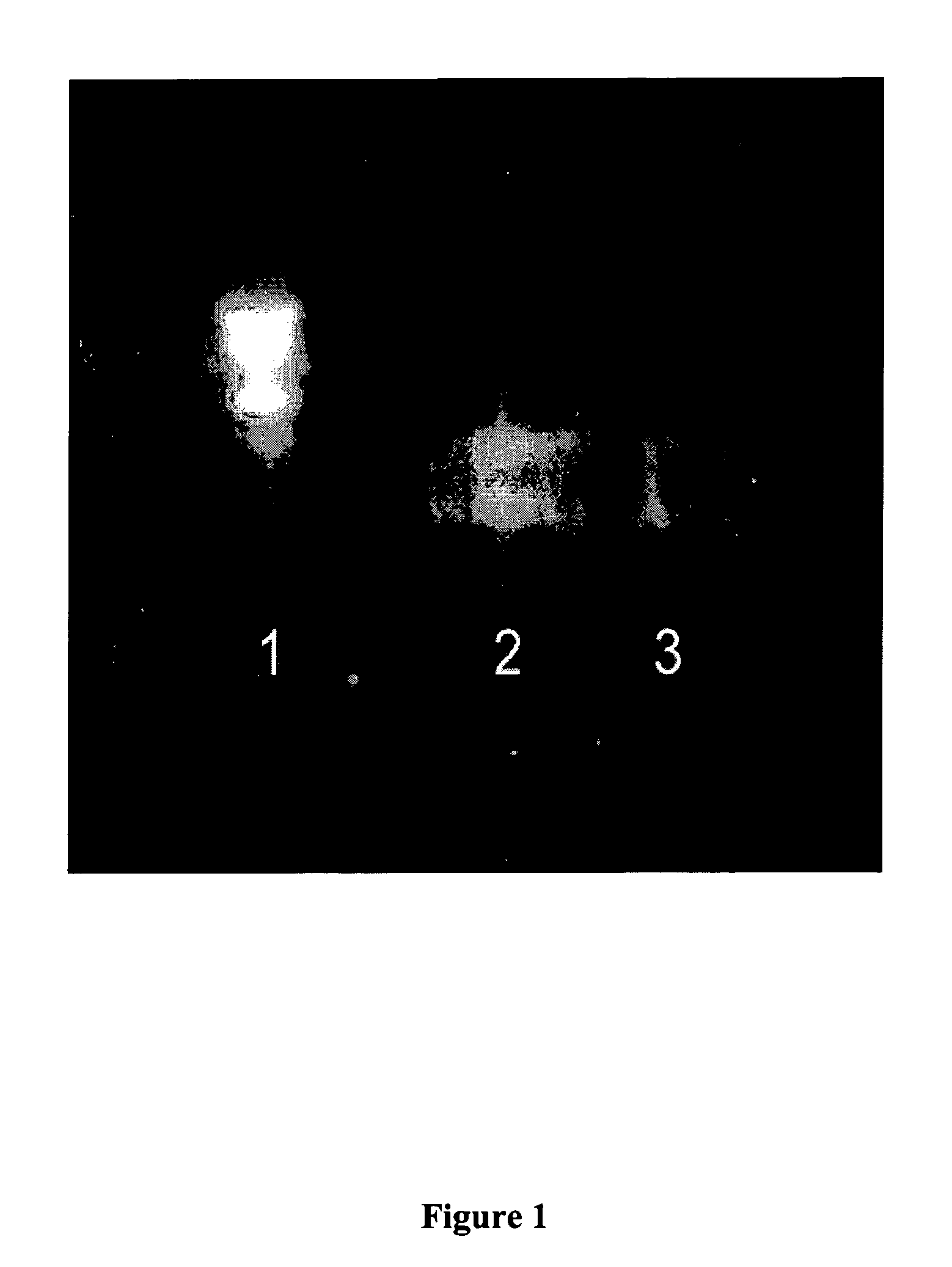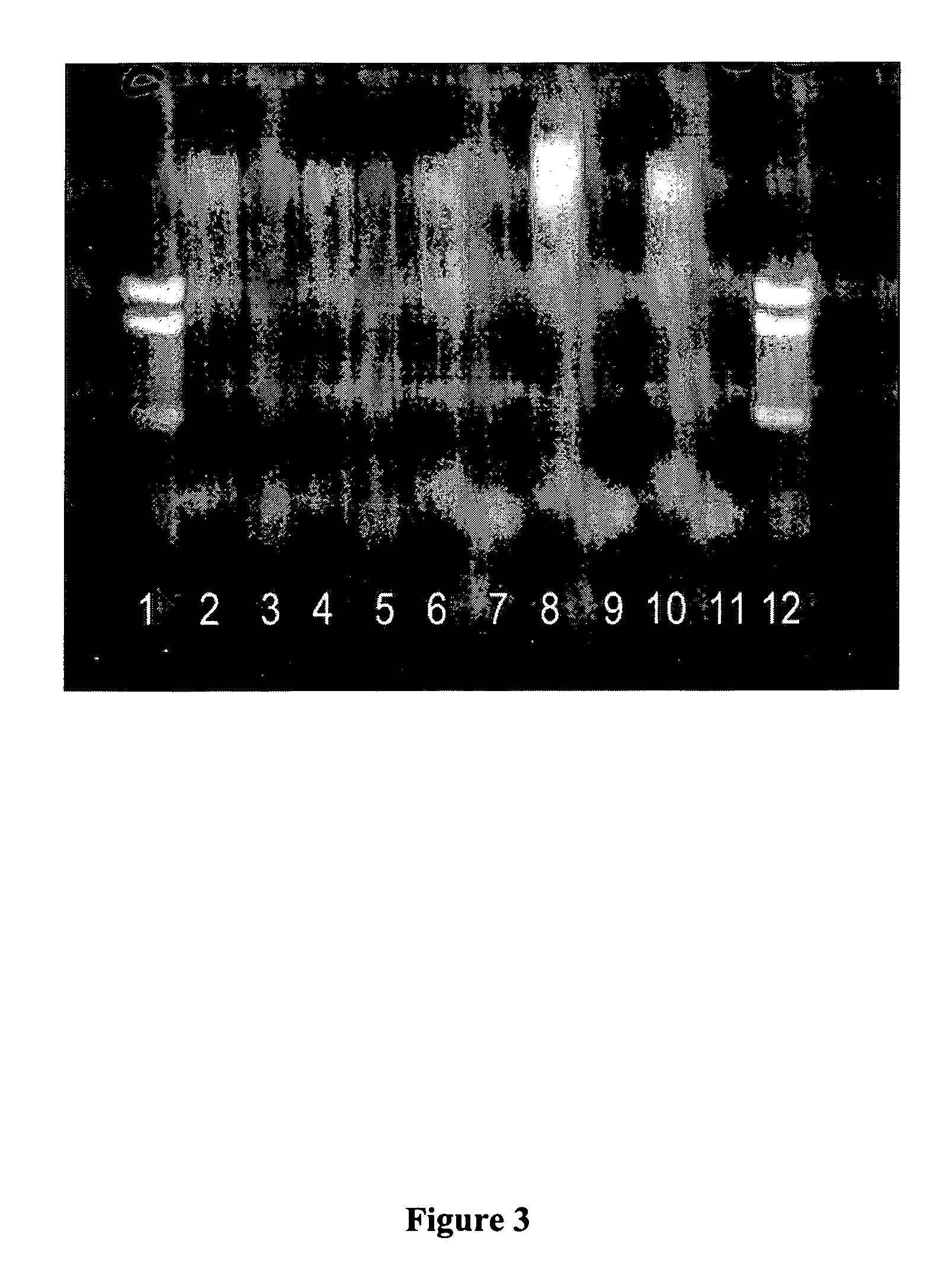Fetal RNA in amniotic fluid to determine gene expression in the developing fetus
a technology of amniotic fluid and fetal rna, which is applied in the direction of sugar derivatives, biochemistry apparatus and processes, organic chemistry, etc., can solve the problem that no other technology is available to determine the gene expression pattern of a living human fetus
- Summary
- Abstract
- Description
- Claims
- Application Information
AI Technical Summary
Benefits of technology
Problems solved by technology
Method used
Image
Examples
example 1
Preliminary Test—Fetal mRNA Extraction From Amniotic Fluid
[0225] Cell-free fetal mRNA has been successfully extracted and amplified from both fresh and frozen residual amniotic fluid samples. Amniotic fluid samples were initially collected for routine diagnostic purposes; the supernatant is usually discarded following karyotype analysis, while in therapeutic amniocentesis the entire sample is discarded. In the cytogenetics laboratory, samples were spun at 350×g for 10 minutes to remove cells for culture. Samples were centrifuged again at 13,000×g either upon receipt in the case of fresh samples, or immediately after thawing in the case of frozen samples. This ensured that the extracted RNA was truly extracellular.
[0226] RNA was extracted using the Qiagen Viral RNA mini kit following the vacuum protocol as described above. Sample starting volumes were typically 420 μL. Synthetic poly-A RNA (15-25 μg) was added to the sample during extraction as a carrier. RNA was concentrated into ...
example 2
Large Volume Amniotic Fluid Samples—Processing and Storage
[0229] In some instances, large volumes (>1L) of amniotic fluid are drawn for therapeutic reasons (i.e., polyhydramnios). These samples, which are usually discarded, provide large starting quantities of fetal cell-free RNA. Nine of such high volume samples have been collected so far and are currently stored. Typically, the amniotic fluid was drawn into 1 L vacuum-sealed containers in a sterile manner. Upon receipt, the fluid was divided into 50 mL aliquots and centrifuged at 800×g for 15 minutes to remove any cellular material. The supernatant (45 mL) from the samples was pooled into 225 mL containers for storage at −80° C.
example 3
Large Volume Amniotic Fluid Samples—RNA Extraction and Preparation for Microarrays
[0230] Two large volume amniotic fluid samples were obtained and processed as above. One was from the pregnant woman carrying twin female fetuses at 24 3 / 7 weeks of gestation (designated TTT1). The other sample was taken from the pregnant woman at 29 4 / 7 weeks of gestation whose male fetus had hydrops of unknown etiology (designated Hydrops1). In addition, 30 mL of each sample was taken (in 5 mL aliquots) and RNA was extracted in lieu of freezing the aliquot using a modification of the QIAamp Viral RNA Vacuum Protocol for Large Volumes (Qiagen, Inc., Valencia, Calif.) as described above. The two 30 mL samples yielded 7.2 ng and 12.7 ng, respectively. In order to obtain a larger quantity of RNA, 60 mL of previously frozen amniotic fluid supernatant from the above samples were used for an additional extraction. The samples were pooled, precipitated and resuspended in 10 μL of RNAse inhibitor free water,...
PUM
| Property | Measurement | Unit |
|---|---|---|
| volume | aaaaa | aaaaa |
| volumes | aaaaa | aaaaa |
| volumes | aaaaa | aaaaa |
Abstract
Description
Claims
Application Information
 Login to View More
Login to View More - R&D
- Intellectual Property
- Life Sciences
- Materials
- Tech Scout
- Unparalleled Data Quality
- Higher Quality Content
- 60% Fewer Hallucinations
Browse by: Latest US Patents, China's latest patents, Technical Efficacy Thesaurus, Application Domain, Technology Topic, Popular Technical Reports.
© 2025 PatSnap. All rights reserved.Legal|Privacy policy|Modern Slavery Act Transparency Statement|Sitemap|About US| Contact US: help@patsnap.com



